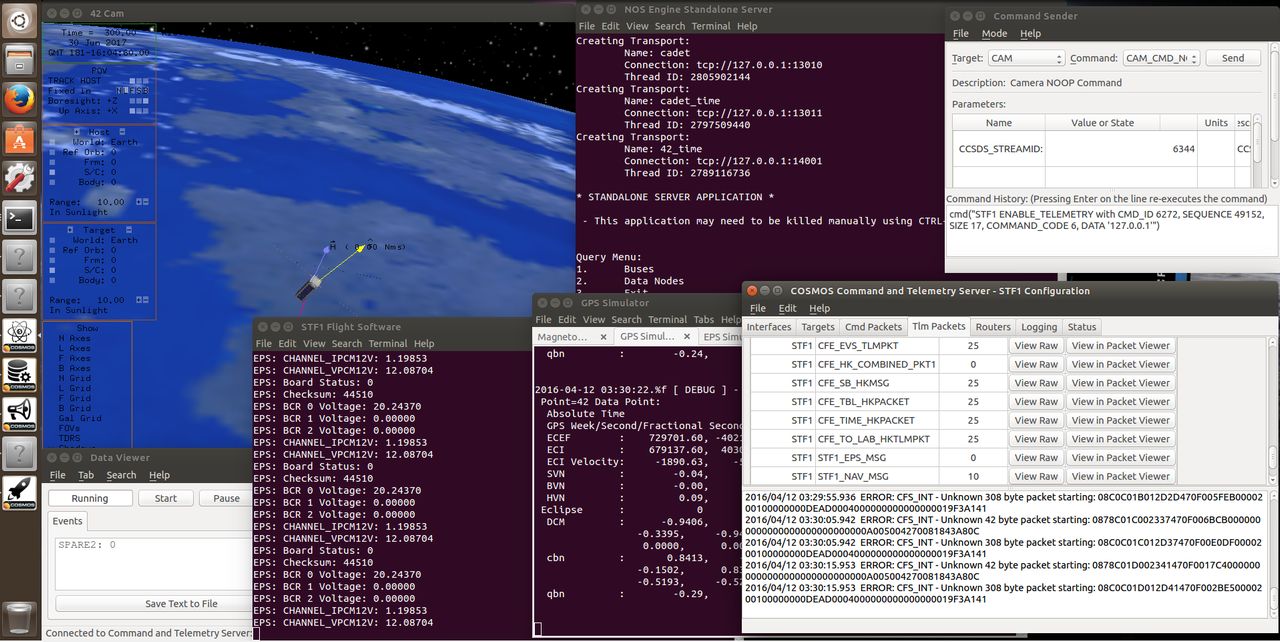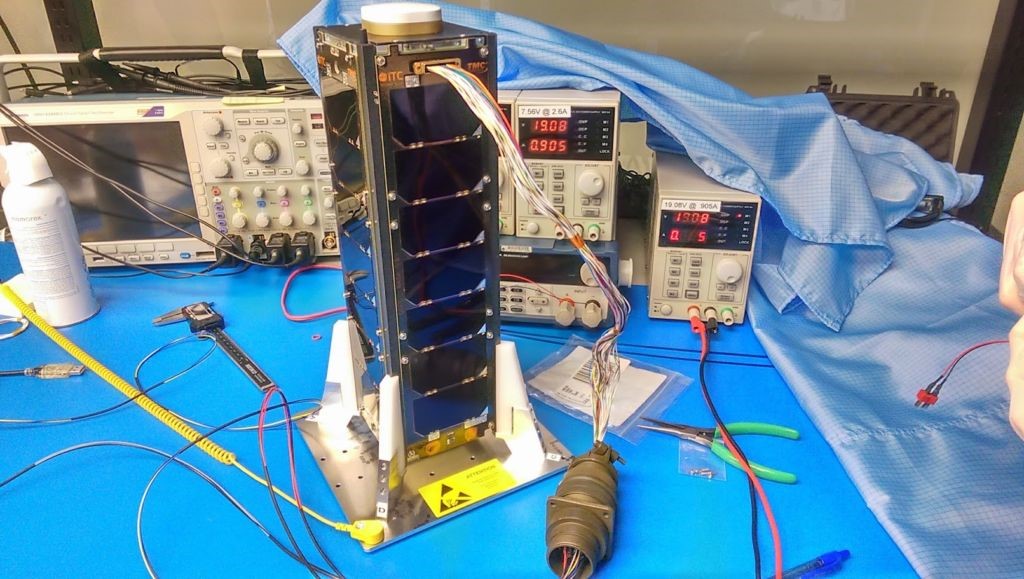
Simulation-to-Flight (STF-1) is a GSFC 3U CubeSat led by Principal Investigator Justin Morris. The mission is funded by the NASA West Virginia Space Grant Consortium. It is a collaboration between NASA’s Independent Verification and Validation (IV&V) Facility, TMC2 Technologies, and West Virginia University. It was the first CubeSat from the state of West Virginia. The primary objective of STF-1 is to demonstrate the utility of the NASA Operational Simulator (NOS) technologies across the CubeSat development cycle, from concept planning to mission operations. The NOS technologies promote the reusability of software simulation products across multiple missions, reducing cost, schedule, and risk. NOS provides a means to simulate hardware in a software environment, enabling advanced verification and validation activities. NOS technologies have been utilized in the testing of several large spacecraft systems and subsystems to include the James Webb Space Telescope, Global Precipitation Measurement, Juno, and Deep Space Climate Observatory missions. On these missions, the technologies have demonstrated significant value to several user groups: software development, mission operations, verification and validation, test procedure development and check-out.
A secondary objective of the mission is to advance engineering and physical science research at West Virginia University. This included three science goals in the areas of navigation, magnetosphere-ionosphere coupling and space weather, and the performance and durability of III-V Nitride-based materials. For the advancement of CubeSat navigation systems, a new concept is incorporated for inertial sensing that promises to enable a new class of inertial navigation performance by combining the output of many low-cost Microelectromechanical Systems (MEMS) Inertial Measurement Units (IMUs) to approximate the performance of a higher quality IMU. Additionally, a Fast, Orbital, Total Electron Content (TEC), Observables and Navigation (FOTON) software-defined multi-frequency Global Navigation Satellite Systems (GNSS) space receiver is included that promises to significantly improve the Precise Orbit Determination (POD) on CubeSat platforms. In order to measure dynamic properties of the ionospheric plasma system and verify ionospheric coupling to the solar and magnetospheric drivers, a Langmuir probe, radio sounder, and particle counters were included in the instrument package. The Langmuir probe is used to measure electron density and temperature of the ionosphere. The radio sound collects plasma density information and magnetic field measurements. The particle counters detect high fluxes of precipitating electrons, which can produce surface and deep dielectric charging on the spacecraft. For the assessing the performance of III-V Nitride-based materials, a precision optoelectronic sensor platform containing arrays of light-emitting diodes (LEDs) and photodiodes (PDs) with minimal shielding was developed. The sensor platform required shielding for reliable functionality in the low temperature and high radiation space environment. The III-V Nitride-based materials were used to shield the sensor platform in order to evaluate its effectiveness.

The NASA IV&V team modeled the spacecraft in the NOS environment, wrote the flight software, and tested it through simulation. The West Virginia University engineers and scientists built, tested, and delivered each of the engineering and instrument units to NASA IV&V for integration into the spacecraft. The spacecraft bus included COTS components from several vendors including Clyde Space (EPS and batteries), Novatel (GPS), L3 communications (radio), GomSpace (flight computer), and Innovative Solutions in Space (RF antenna). The NASA IV&V team added a camera to verify deployment operations, assess the camera in the space environment, and take pictures of the Earth and atmosphere. Flight software testing with the spacecraft was able to demonstrate the effectiveness of the NOS platform. STF-1 was environmentally tested by the NASA IV&V team at GSFC in preparation for the NASA CubeSat Launch Initiative (CSLI) program launch opportunity on Rocket Lab's Electron.

The spacecraft was launched to a circular 85° high-inclination orbit at an altitude of 500 km on December 16th, 2018. Initial contact was made within the first week by the NASA Wallops Flight Facility UHF ground station. The mission operated nearly flawlessly over the course of 6 months. It completed approximately 5,500 orbits around the globe and successfully transmitted more than 3.4 gigabytes of scientific payload experiment data. Several of the secondary science and engineering objectives for West Virginia University were met. The spacecraft has since concluded its mission operations. Contact with the spacecraft was last made on February 16, 2024, and it deorbited on February 21, 2024.


